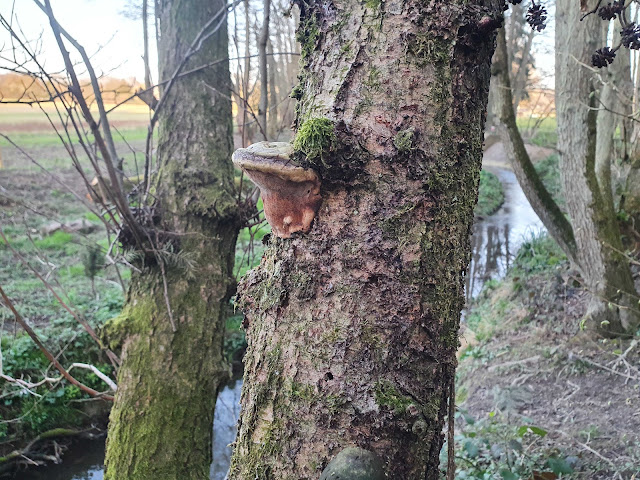Very old, broken down Alder Bracket at the corner of Dene Park where the pipe inlet is, and there is a small collection of tall Black Alder trees by the side of the stream. The remnants of the brackets were exactly where the books predicted, on a dead standing Alder trunk. One of the photos in the TMA Fungi App is quite similar. However this identification was largely based on eliminating other possibilities - in other words, "what else could it be"?
The caps are more or less correct, assuming that the pores beneath have been largely eroded (worn away), and the confluence of the remaining material looks fairly typical, The flesh of the annual brackets is said to be at first soft, but becomes hard, woody and red-brown as the brackets age, as I have assumed is the case here.
The name has been regularly changed and Inonotus radiatus is still very commonly used in the reference books. The BMS recognises it as Mensularia radiatus. TMA Fungi has it, somewhat unusually, in its latest iteration, Xanthoporia radiata (Sowerby) P. Karst.
Could this be a much less decayed version, on a nearby trunk, or is it something else entirely?
(confirmed at the end of October, when fresher)







